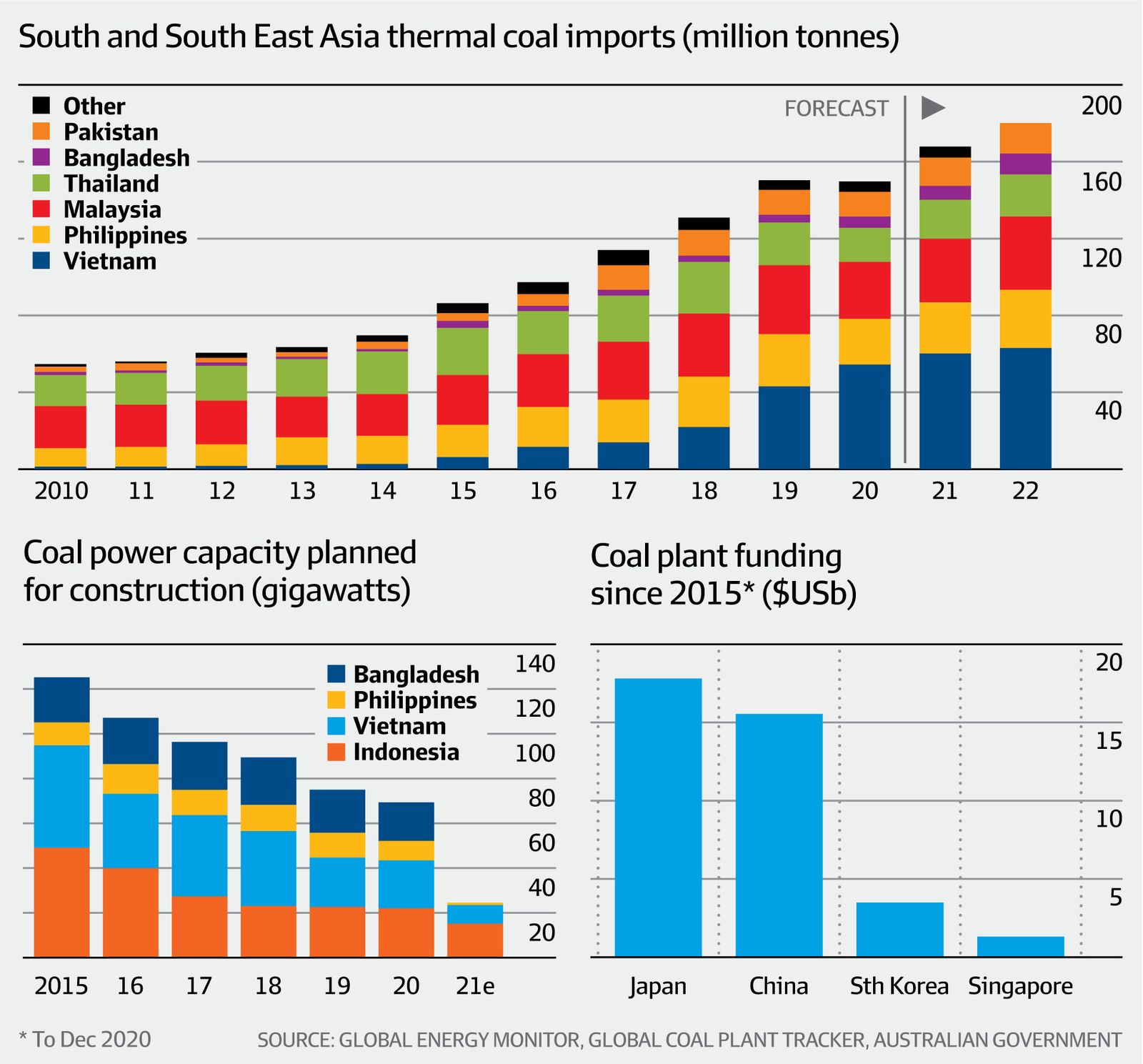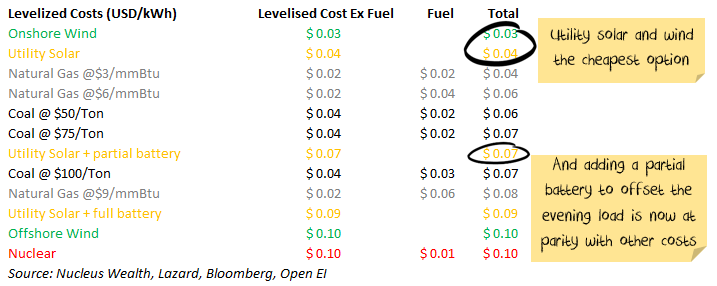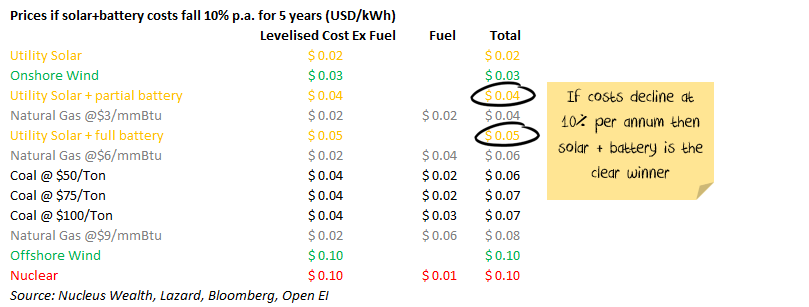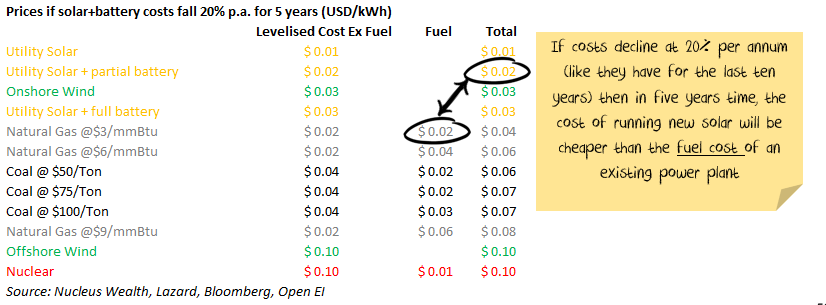Via the AFR:
Policy changes flagged by politicians and government departments in Vietnam, Indonesia and Bangladesh, and a full moratorium on new coal plants in the Philippines, may result in just 25 gigawatts (GW) of new coal-power projects getting built this year.
That is an 80 per cent reduction from the 125GW planned five years ago, according to a report from the Global Energy Monitor (GEM), a not-for-profit organisation funded by philanthropic organisations such as the US based Ford Foundation, the German Corporation for International Coopeeration and the European Climate Fund.
This is driven by the pure economics of alternative energies:
In five years it will be much cheaper:
If it goes the way we think it will, renewables plus full storage will be more than 60% cheaper than coal and gas:
Coal is dead. LNG is next.
Can I suggest that instead of bullshitting, policymakers start planning for major economic stimulus and economic restructuring for QLD and the Hunter.





